The historical places in Rio de Janeiro, Brazil, provide a captivating odyssey through the city’s storied past, from colonial buildings and magnificent imperial palaces to cultural institutions that defined Brazil’s character. A former capital of the Portuguese Empire, Rio is a blend of European sophistication and tropical adventure. Strolling through its rainbow-hued neighbourhoods, grand churches, and historical museums is a step back in time. Every street and building whispers a history of colonial origins, royal lineage, and revolutionary passion, turning Rio into a living museum for history buffs and culture vultures alike.
10 Historical Places In Rio de Janeiro
This is the list of historical places in Rio de Janeiro, ranging from relics of the past, cultural artefacts documenting Brazil’s social and artistic development.
1. Christ The Redeemer And Corcovado Mountain

Photo: Donatas Dabravolskas / Wikimedia Commons
Christ the Redeemer is one of the most recognised landmarks in the world and a breathtaking manifestation of Rio de Janeiro’s religious fervour, cultural heritage, and national identity. Symbolically seated atop the 700-meter-tall Corcovado Mountain, the statue stands 30 meters tall with arms stretched out 28 meters wide, embracing the city below. Throughout the years, Christ the Redeemer has become a symbol of peace, harmony, and hospitality. Now, it is a UNESCO World Heritage Site and continues to attract millions of travellers from across the world annually.
Location: Corcovado Mountain, Tijuca National Park
Main Attractions: The Statue of Christ, scenic views of Rio
How To Reach: By train from Cosme Velho or van services
2. Imperial Palace (Paço Imperial)
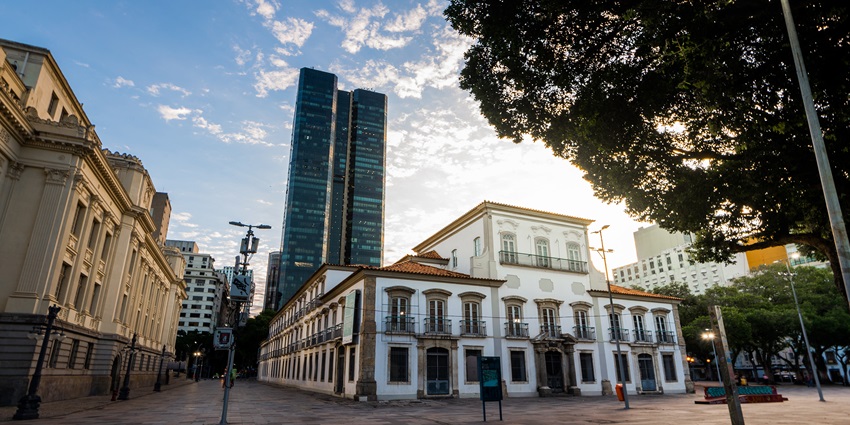
Photo: Donatas Dabravolskas / Wikimedia Commons
In the historic city centre of Rio de Janeiro, Paço Imperial is an enormous colonial palace where the Portuguese royal family and then the Brazilian emperor had their official residence. It is one of the famous historical places in Rio de Janeiro. Its stunning architecture, complete with era flourishes such as gargantuan stairways and ornate balconies, manifests the splendour of its imperial past. Today, Paço Imperial is also converted into a lively cultural hub, with temporary shows, artworks, concerts, and literary readings.
Location: Praça XV, Centro
Main Attractions: Palace rooms, works of art, historic courtyard
How To Reach: By metro to Carioca Station
3. Lapa Arches (Arcos Da Lapa)

Photo: Mike Peel / Wikimedia Commons
The Arcos da Lapa, commonly known as the Lapa Arches, are among the strongest and most imposing historical landmarks in Rio de Janeiro. Made of 42 white stone arches, the arch was finally used to support the Bondinho de Santa Teresa, Rio’s popular yellow tram that goes up and down the bohemian district of Santa Teresa. During the day, the arches give a glimpse of Rio’s past architecture; at night, the site becomes alive with music, samba, street graffiti, and partygoers. Nowadays, the Lapa Arches continue to be a cultural symbol and entrance to Rio’s nightlife scene.
Location: Lapa District
Main Attractions: Aqueduct building, nightlife, nearby Selarón Steps
How To Reach: Walking distance from Cinelândia Station
4. Selarón Steps (Escadaria Selarón)
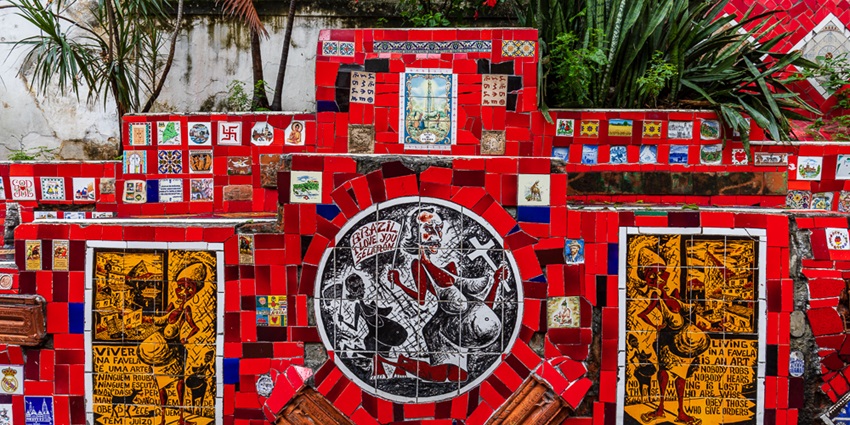
Photo: Julia Sumangil / Wikimedia Commons
The Selarón Steps or Escadaria Selarón are two of the most vibrant and popular historical places in Rio de Janeiro. Spanning over 215 colourful steps, the staircase links the Lapa and Santa Teresa neighbourhoods. It is covered with over 2,000 brightly painted tiles, which have been gathered from over 60 nations. Each of the tiles is integrated into a beautiful mosaic that speaks volumes about Selarón’s immense love for Brazilians and his dedication to the art form. Today, the Selarón Steps are a testament to the imagination and perseverance of cultures and artistic heritage.
Location: Between Santa Teresa and Lapa
Main Attractions: Mosaic tiles, street art sculptures, photo point
How To Reach: Walking from Cinelândia Station or Lapa
5. Municipal Theatre (Theatro Municipal Do Rio De Janeiro)
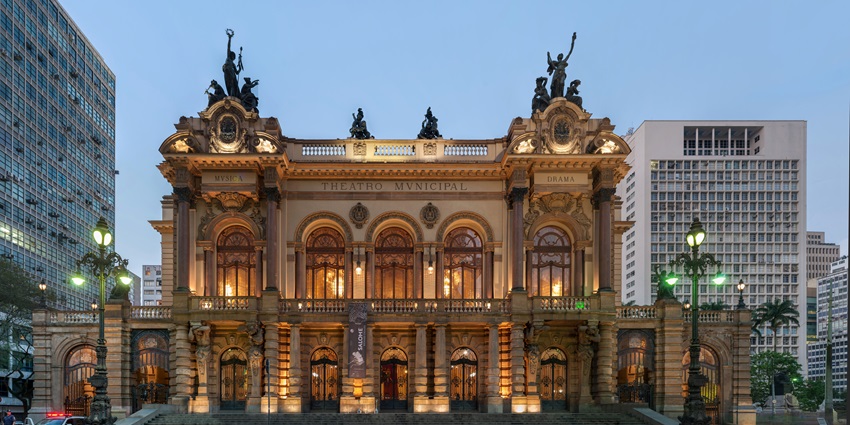
Photo: Wilfredor / Wikimedia Commons
As an epitome of the Paris Opera House’s beauty, the Teatro Municipal is the best architectural and cultural gem of Rio de Janeiro. With its exquisitely decorated facade, marble staircases, stained glass windows, and gold leaf decorations. Downtown in Rio, Theatro Municipal has been the hub of Brazil’s performing arts culture for decades, playing host to a combination of world-class operas, ballets, symphonies, and plays. It remains interesting to see, with its rich heritage and multicoloured schedule, a monument of Rio’s devotion to classical beauty and artistic perfection.
Location: Cinelândia, Centro
Main Attractions: Opulent interior, stained glass, murals
How To Reach: Metro to Cinelândia Station
6. Santa Teresa Neighbourhood
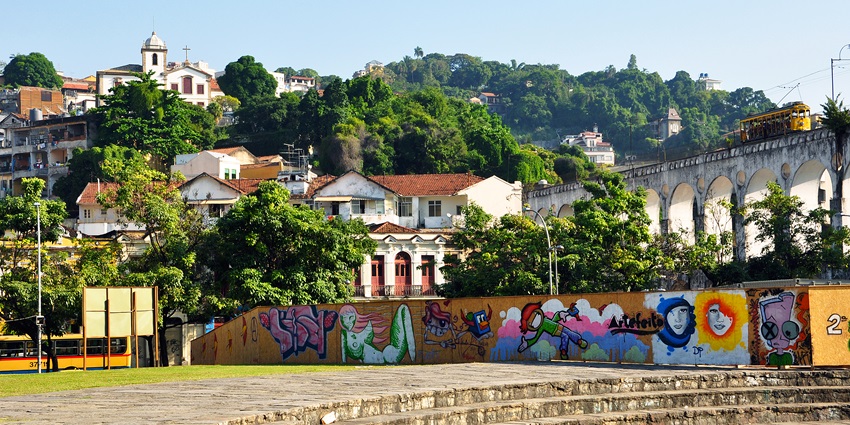
Photo: chensiyuan / Wikimedia Commons
Santa Teresa is a quaint hillside community that elegantly retains the colonial atmosphere of Rio de Janeiro. Renowned for its winding cobblestone streets and old yellow trams that wind along the hills, Santa Teresa has a retro vibe that draws in artists, musicians, and bohemians from all over the city. The neighbourhood is sprinkled with various art studios, art galleries, and charming cafes, resonating with the notion that the bohemian soul of Rio resides here. In addition to the lively cultural life, Santa Teresa has a dramatic panoramic city and Guanabara Bay vistas.
Location: Hills above Lapa
Main Attractions: Historic mansions, street art, art galleries
How To Reach: On foot or by tram from Lapa
7. São Bento Monastery (Mosteiro De São Bento)
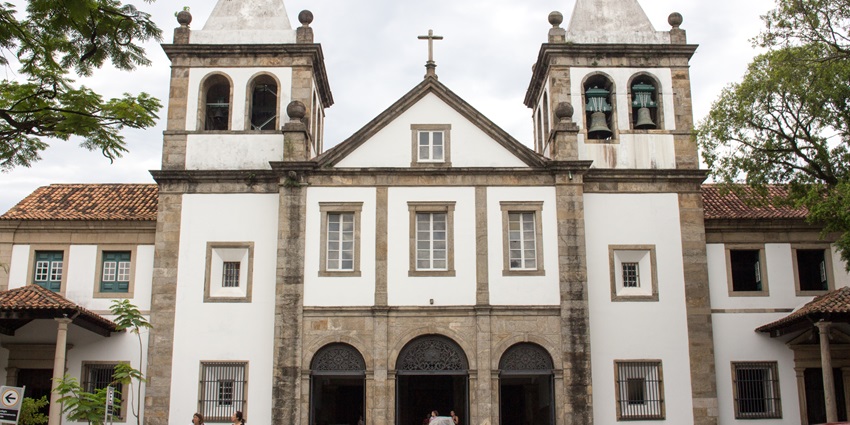
Photo: Klayton Aurélio de Oliveira / Wikimedia Commons
This 17th-century monastery is one of Rio de Janeiro’s oldest and most stunningly lovely religious structures, with all the opulence of Portuguese colonial baroque architecture. Its theatrical façade gives way to an interior handsomely decorated by opulent woodwork, opulent gold-leaf carvings, and opulent religious paintings, an atmosphere that is at once spiritually ennobling and artistically overwhelming. This convergence of architectural majesty and vibrant piety makes the monastery a cultural gem and a site of continuing spiritual importance within Rio’s robust religious heritage.
Location: Centro, close to Praça Mauá
Main Attractions: Baroque altars, Benedictine choir
How To Reach: By metro to Uruguaiana or Carioca Station
8. Quinta Da Boa Vista & National Museum
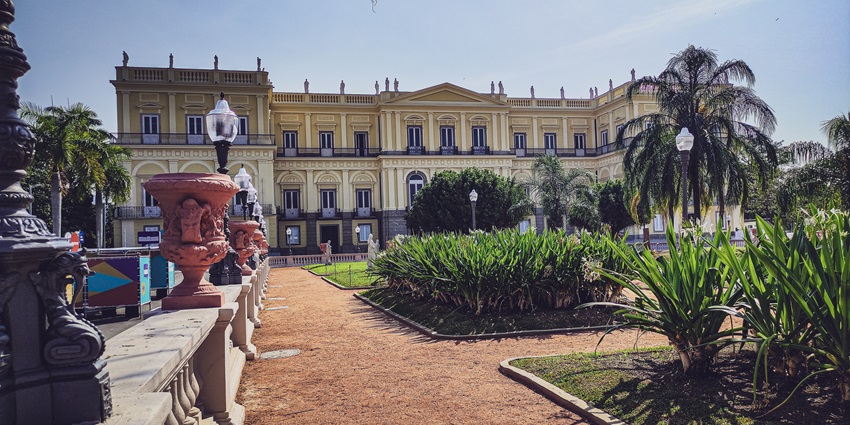
Photo: Estela Neto / Wikimedia Commons
Quinta da Boa Vista is a top historical place in Rio de Janeiro that was initially the royal palace of the Portuguese royal family and subsequently the residence of Brazil’s National Museum. The grandiose palace and vast gardens form the dignity and magnificence of Brazil’s imperial legacy. Restoration and reconstruction work are going well on this valuable cultural landmark. Quinta da Boa Vista remains a popular public square, providing both insight into Brazil’s glorious imperial heritage and a tranquil oasis amidst the city’s bustle.
Location: São Cristóvão
Main Attractions: Palace grounds, zoo, historic monuments
How To Reach: By train to São Cristóvão Station
9. Candelária Church (Igreja Da Candelária)
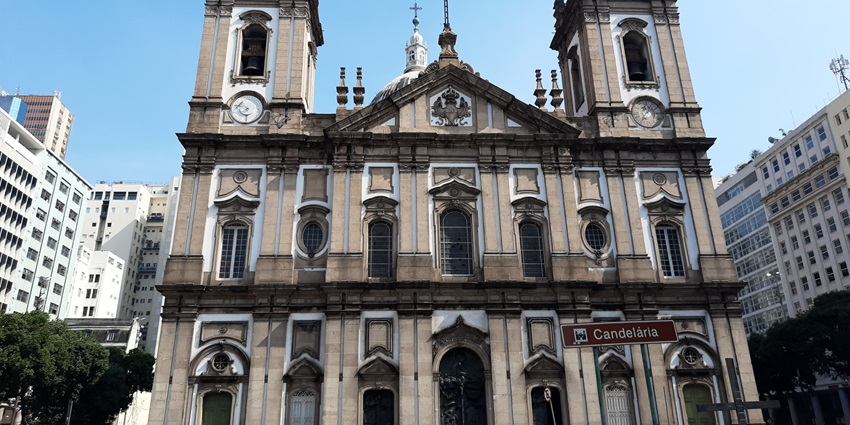
Photo: Rubens Trindade / Wikimedia Commons
The Candelária Church is one of Rio de Janeiro’s most beautiful Catholic churches. Its design is a sublime synthesis of neoclassical restraint and baroque opulence, so it is a breathtaking visual landmark in the old city centre. The church has been the setting for innumerable landmark moments, ranging from national holidays to moments of dramatic tragedy, mirroring Rio and Brazil’s complex history. As a religious shrine as well as a cultural symbol, the Candelária Church reflects Rio’s indomitable faith, courage, and tenacity. Its luxuriously ornamented interior, magnificent stained-glass windows, and breathtaking sculptures continue to awe visitors.
Location: Avenida Presidente Vargas, Centro
Main Attractions: Breathtaking altars, stained glass, domed ceiling
How To Reach: Subway to Uruguaiana Station
10. Ilha Fiscal (Fiscal Island Palace)
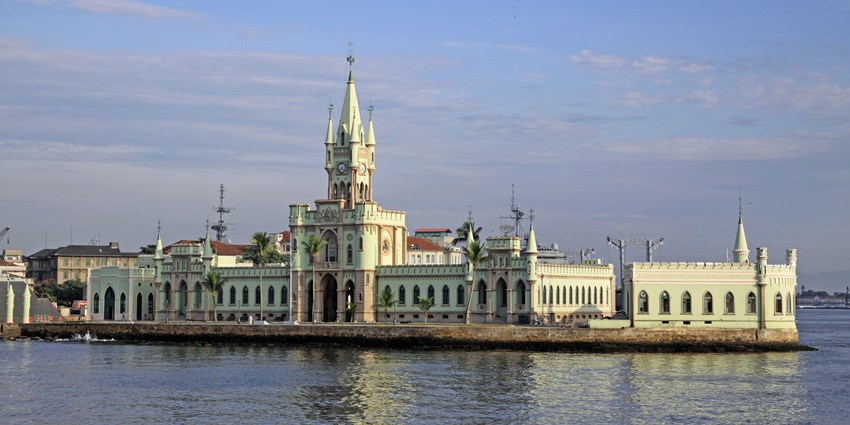
Halley Pacheco de Oliveira / Wikimedia Commons
Ilha Fiscal, or the “fairy-tale palace,” is one of Rio’s most romanticised historical landmarks. This neo-Gothic style architecture building on a small island near the sea is famous as the site of the last imperial ball of the Brazilian Empire. Its filigree-decorated towers, pointed arches, and wafer-thin lines form a breathtaking silhouette against the background of Guanabara Bay, making it one of the city’s most beautiful places. These tours provide a captivating glimpse into the imperial history of Brazil and the lives of its former royal monarchs and preserve the memories of the past in a magical ambience.
Location: Guanabara Bay, through the navy dock near Praça XV
Main Attractions: Bay scenery, Neo-Gothic palace, historical exhibits
How To Reach: Ferry tours from the Navy Cultural Center
From colonial churches to imperial mansions, from lively steps to green gardens, historical places in Rio de Janeiro are filled with the riches and vibrancy of the city’s history. Wherever you are, it is encompassed by the rhythms of samba and tales of emperors, saints, and artists. Check out more such packages offered by TripXL for an unforgettable adventure at your dream destinations.
Cover Photo: Florencia Potter / Pexels


 WhatsApp
WhatsApp
 Twitter
Twitter









